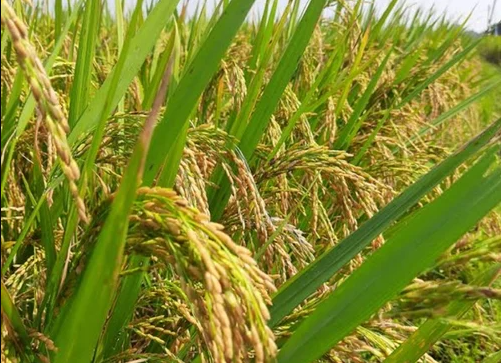
NH MTU-7029 is a hybrid rice variety developed for high yield and resistance to several common rice diseases. It is known for its excellent productivity and grain quality, making it popular among farmers aiming to maximize their rice yields in areas with favorable growing conditions.
Here’s a more detailed look at NH MTU-7029:
Key Features of NH MTU-7029:
Duration:
- Medium-duration variety, typically taking about 130-135 days from sowing to harvesting. This makes it suitable for regions with a growing season of about 4 to 5 months.
Plant Height:
- The plant height generally ranges from 95 cm to 105 cm, making it a medium-to-tall variety. This height can provide better tillering, but it may also require attention to prevent lodging (when plants fall over), especially in areas prone to heavy winds or rainfall.
Grain Quality:
- Grain Type: It produces medium to long grains, which are highly valued in both domestic and international markets.
- Grain Color: Typically white in color, making it suitable for processing and sale.
- Cooking Quality: The grains cook well and have a good texture, making them desirable for consumers.
Yield Potential:
- NH MTU-7029 is known for its high yield potential. Under ideal conditions, it can produce 30-35 quintals per acre. With optimal agronomic practices and favorable growing conditions, yields can go up to 50-55 quintals per acre.
- The hybrid nature of this variety contributes to its high productivity, which is one of its strongest selling points.
Resilience and Disease Resistance:
- This variety has been bred to offer resistance to several common rice diseases like rice blast, bacterial blight, and leaf spot. This helps reduce the need for frequent pesticide applications, promoting a more sustainable farming approach.
- It also shows some tolerance to environmental stresses, including drought and waterlogging, although irrigation is still critical for maintaining high yields.
Ideal Growing Conditions for NH MTU-7029:
Climate:
- Tropical to subtropical climates are ideal for growing this variety. It requires warm temperatures (typically 25°C to 35°C) and adequate moisture throughout its growth cycle.
Soil:
- Prefers well-drained, loamy soils but can also tolerate clay loam and alluvial soils that retain moisture.
- Fields should be properly prepared for puddling to improve water retention and reduce weed competition.
Water Management:
- Flooded conditions are needed during the growing period to optimize growth, particularly during flowering and grain-filling stages.
- Maintain a flooded field (4-5 cm water depth) during the vegetative phase and gradually reduce the water level as the plants mature.
- Drainage before harvest is critical to prevent the grains from absorbing too much moisture and becoming difficult to harvest.
Cultivation Practices:
Land Preparation:
- Puddling (mixing soil with water) is crucial for controlling weeds and ensuring the proper establishment of rice seedlings.
- Ensure the land is well leveled to enable uniform water distribution.
Seed Rate:
- For transplanting, the recommended seed rate is about 25-30 kg per hectare.
- If you’re opting for direct seeding or broadcasting, you may need a higher seed rate (typically 30-35 kg per hectare).
Fertilization:
- A balanced fertilization schedule is crucial for maintaining optimal plant growth. This includes a combination of Nitrogen (N), Phosphorus (P), and Potassium (K).
- For example, an initial dose of 60-70 kg N/ha, followed by 30-40 kg P2O5/ha and 30-40 kg K2O/ha may be applied.
- Fertilizer applications should be divided across different stages of growth, with higher Nitrogen inputs during the tillering and panicle formation stages.
Weed and Pest Management:
- Weed Control: Since rice requires flooded conditions, manual weeding, or the use of herbicides like pre-emergence herbicides, can be employed.
- Pest Control: Monitor for pests such as stem borers, brown plant hoppers, and leafhoppers. Integrated pest management (IPM) techniques like biological control (e.g., introducing natural predators) and chemical control can be used as needed.
- Disease Control: Keep an eye on rice blast and bacterial blight. Use fungicides and bactericides when required, but ensure they are applied at the right growth stages to avoid resistance.
Harvesting:
- Harvesting Time: The crop is ready for harvest when the grains reach physiological maturity (about 80-85% of the grains turn golden yellow).
- Harvesting Technique: It can be harvested with combine harvesters or manually, depending on the farm's scale and resources.
- Post-Harvest Handling: After harvesting, ensure proper drying of grains to reduce moisture content, which is critical for maintaining grain quality and storage longevity.